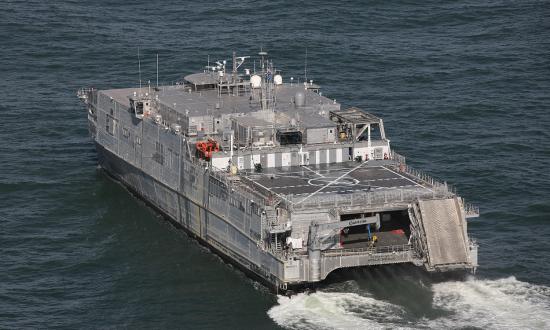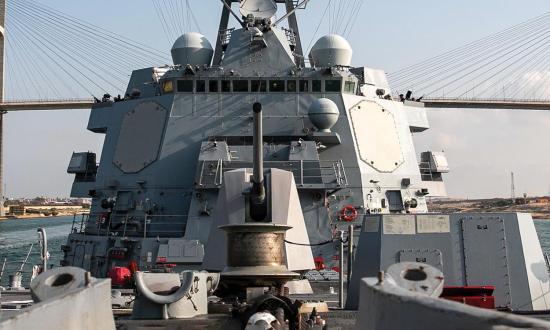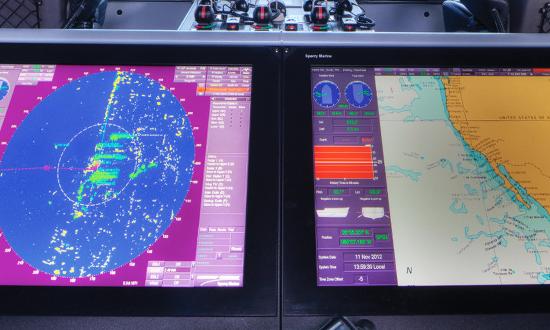The Navy and Ingalls Shipbuilding made history in June when the company delivered the first Flight III Arleigh Burke–class destroyer—the PCU Jack H. Lucas (DDG-125), named for a teenage Marine who received the Medal of Honor for actions on Iwo Jima in 1945.
The history is the result of the 30-plus-year evolution of the DDG-51/Arleigh Burke design and its ever-changing arsenal of advanced systems, headlined by the Flight III SPY-6(V) air and missile defense radar, the key upgrade over the Flight IIA ships (hulls 79 through 124 plus 127). The next step will be to advance to a new class—DDG(X)—which will replace pre–Flight III ships as well as 22 Ticonderoga-class (CG-47) cruisers.
The Navy now counts 73 DDG-51s delivered. Ingalls is moving forward with four more Flight IIIs (hulls 128, 129, 131, and 133), while General Dynamics Bath Iron Works is to build nos. 126, 130, and 132. More than a dozen total are under contract, a number that will continue to grow until DDG(X) is ready to build. In July 2022, the Navy awarded contracts to Ingalls and Bath for engineering and design analysis of DDG(X). In February 2023, naval architects Gibbs & Cox won a bid for DDG(X) design and engineering.
The Arleigh Burke class’s history is rich with shipbuilding and systems engineering breakthroughs, accompanied by the Navy’s sometimes painful steps toward introducing commercial technology for shipboard computer systems.
Lockheed Martin was the longtime prime contractor for the SPY component of the Aegis combat system on destroyers and cruisers. Around 2002, the company began looking at commercial processing technologies that would allow a new “open” computing architecture.
Open architecture was a product of the Aegis combat system’s development “baseline” process. The Navy and the Aegis program office wrestled with the agonies of shifting from closed, Navy-specific systems to commercial ones. A deliberate, disciplined process in system baselines helped keep technology insertions oriented toward incremental improvements. The initial DDG-51 combat system used Baseline 4. When the Navy was tasked with a role in theater ballistic-missile defense (BMD), Aegis Baseline 6, Phase 3, introduced the capability in the early 2000s. Baseline 7.1 added the enhanced SPY-1D(V) radar, Standard Missile Block IIIB, and other weapon upgrades.
In early 2003 the Navy’s big three systems integrators—Lockheed Martin, Raytheon, and Northrop Grumman—began work on new antenna aperture technologies for surface combatants, to reduce the profusion of antennas the ships had acquired for sensors and communication systems. The so-called advanced multifunctional radio frequency concepts led to breakthroughs in antenna design, not only for the DDGs and CGs, but also for carriers and amphibious assault ships.
A full Aegis modernization program started in 2010 and introduced Aegis baseline 9.C1 for enhanced BMD. Baseline 10 is the full-up Flight III baseline that supports the SPY-6(V).
The open architecture work, pushed by the Navy, also led to the system library concept for maintaining proven combat systems software for new ships—an idea that grew into the Navy’s Common Source Library (CSL), which Lockheed Martin maintains for the Navy. In addition to the Arleigh Burkes, combat systems programs from the CSL have been adopted for littoral combat ships and the Constellation-class frigates.
It came as a surprise, then, when the Navy in October 2013 selected Raytheon as the SPY-6(V)’s prime contractor. Lockheed Martin will continue to develop the combat systems software, despite the end of its reign as SPY radar supplier. Navy officials say the plan is to transition from Flight III to DDG(X) around 2032, while retaining the Flight III combat system in the new ships.







